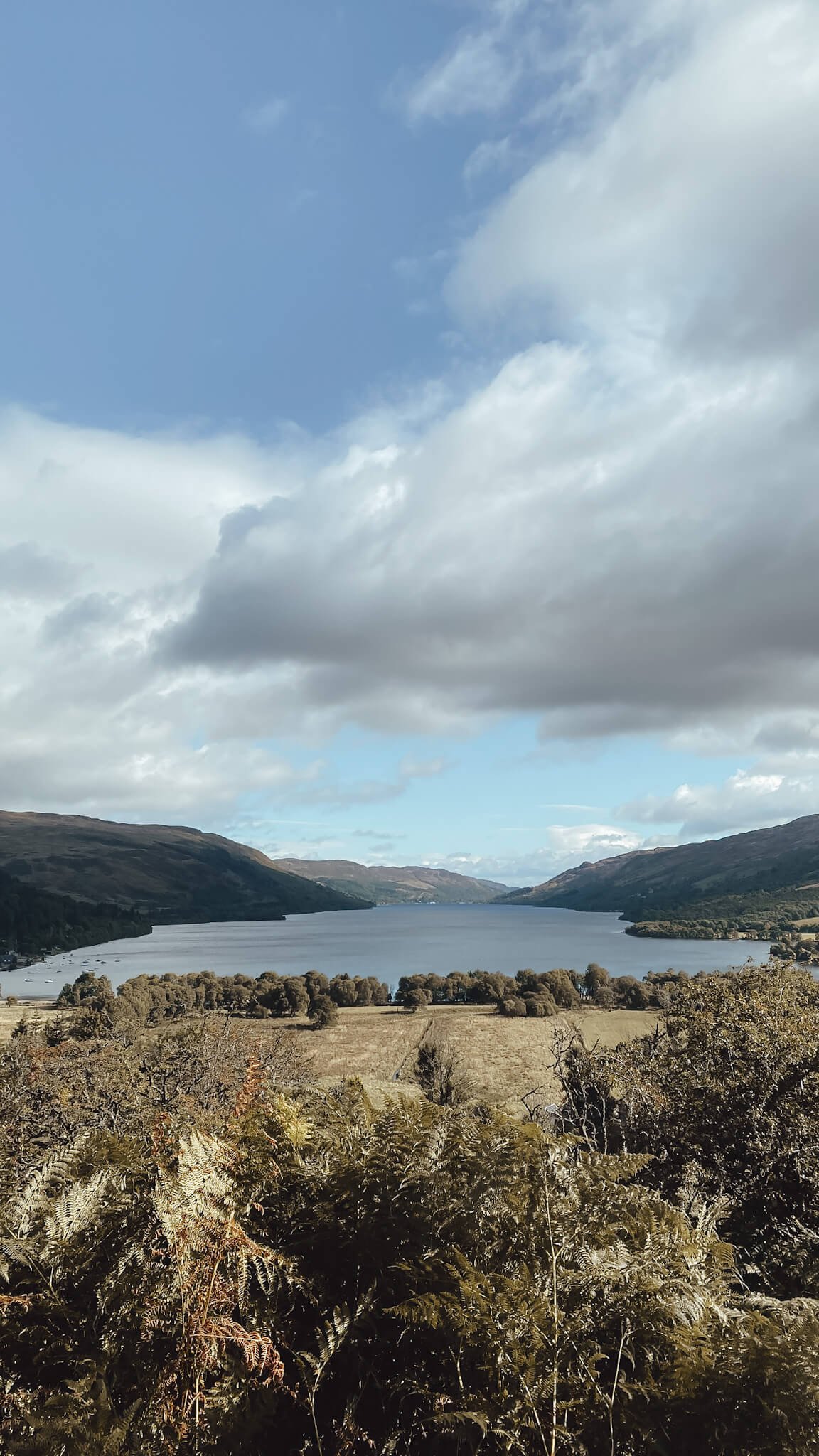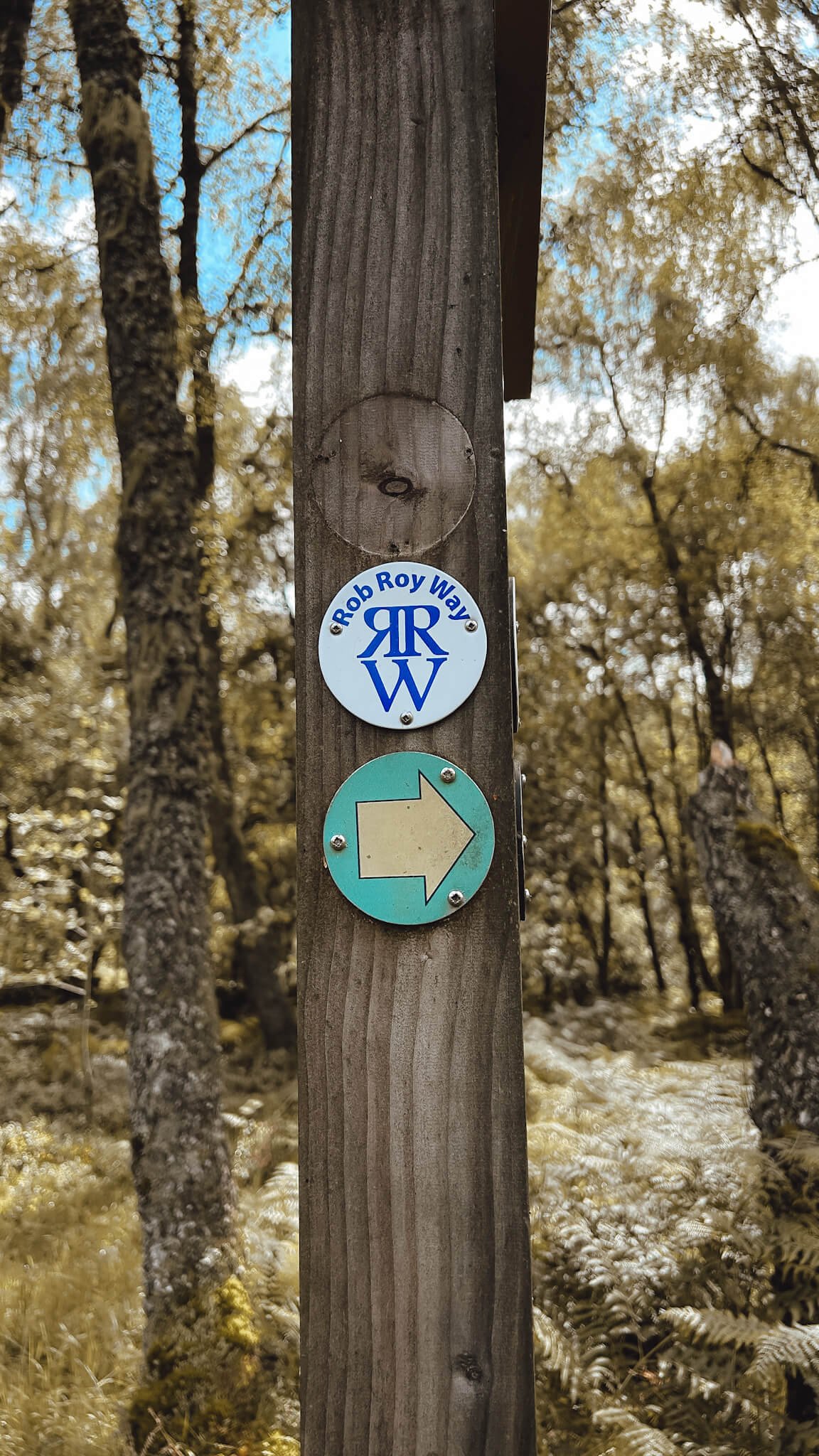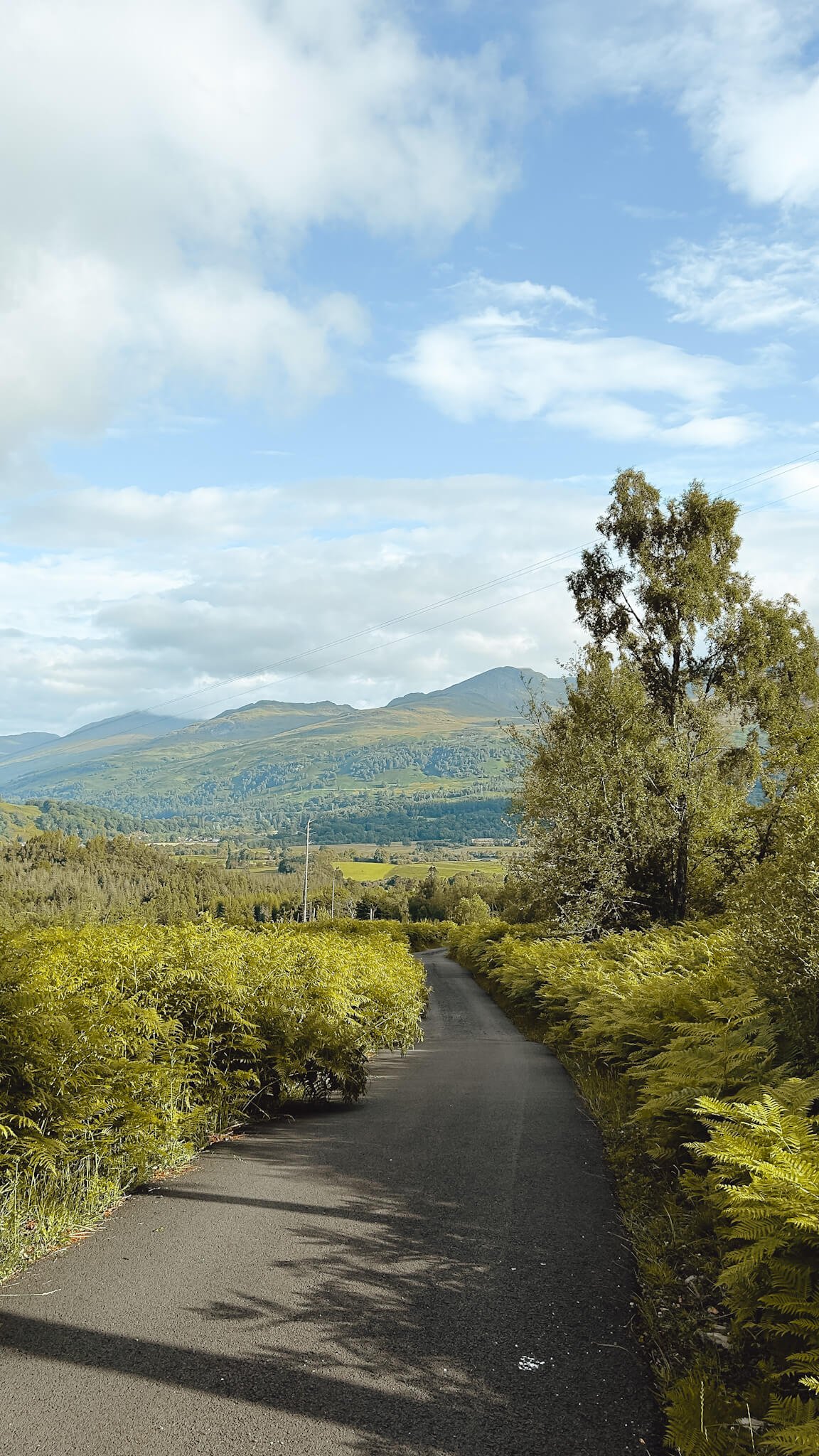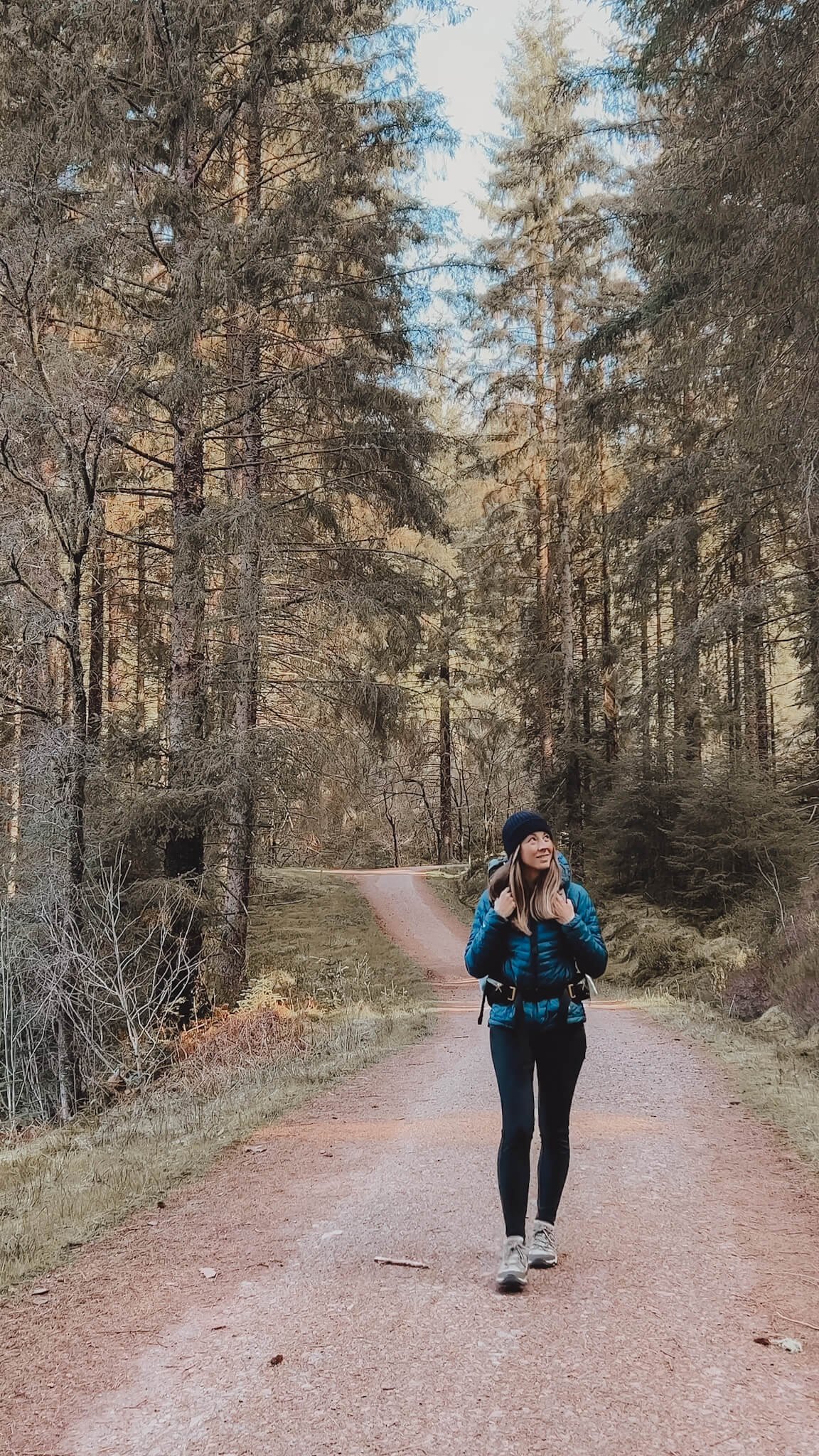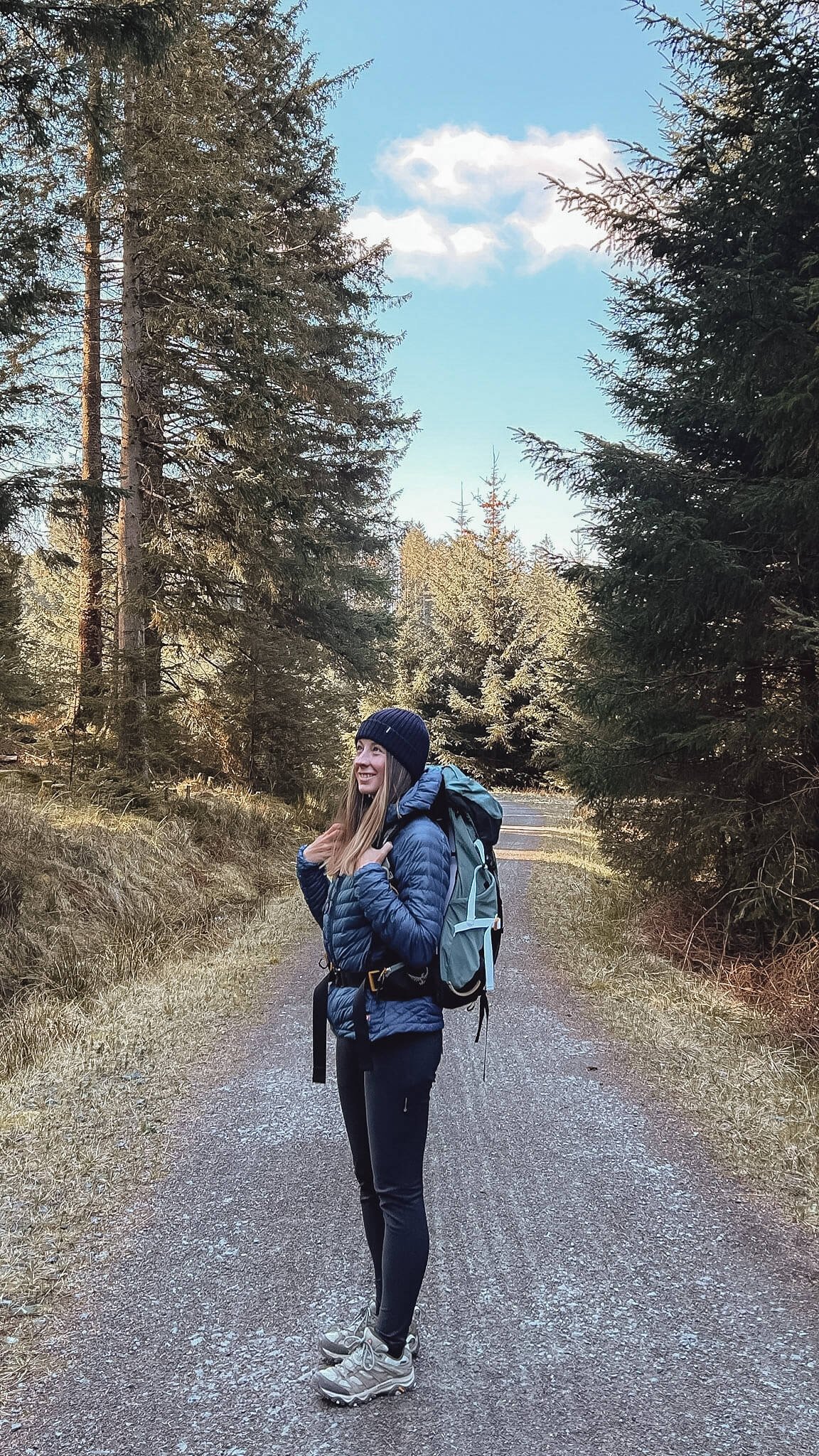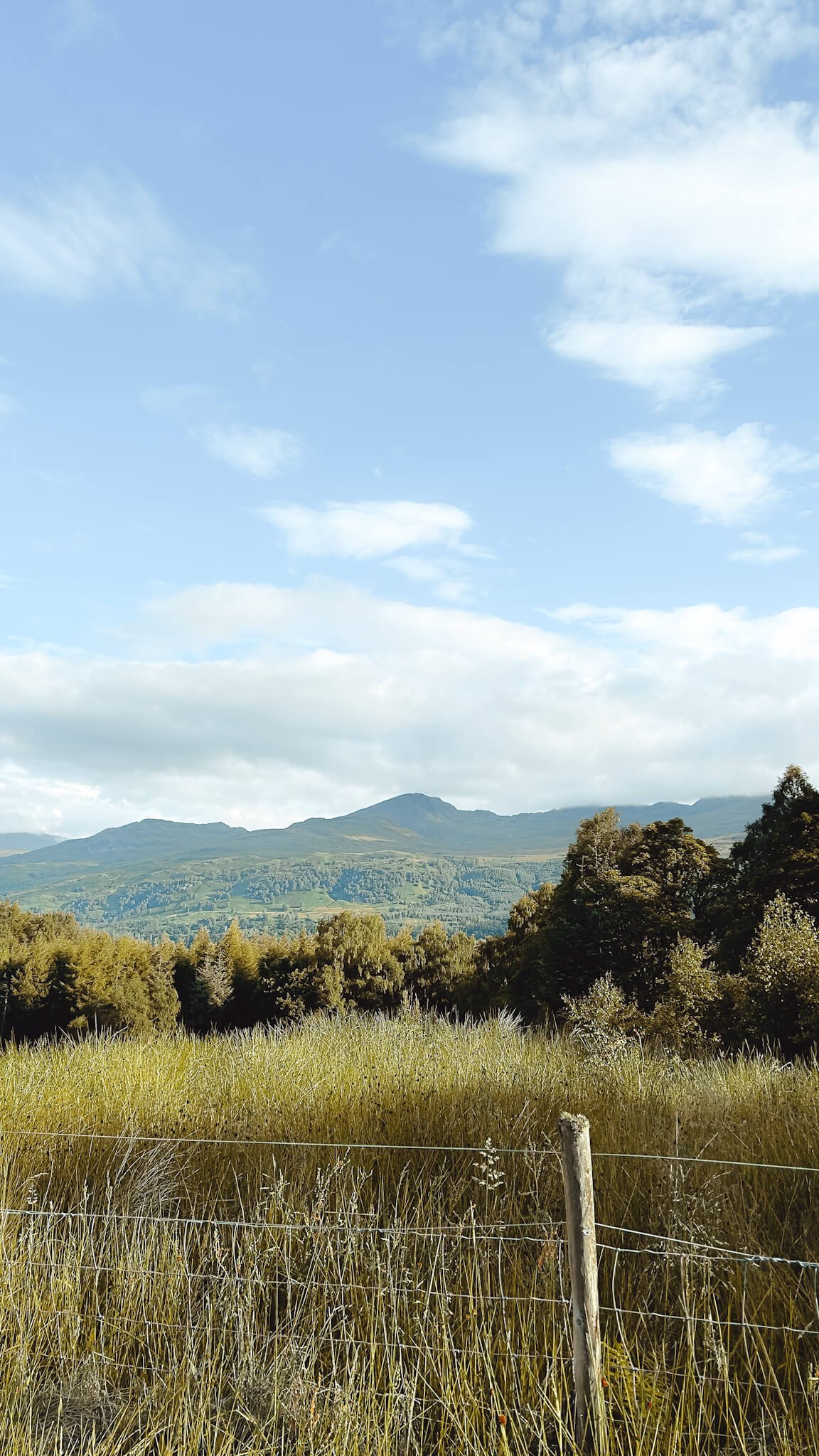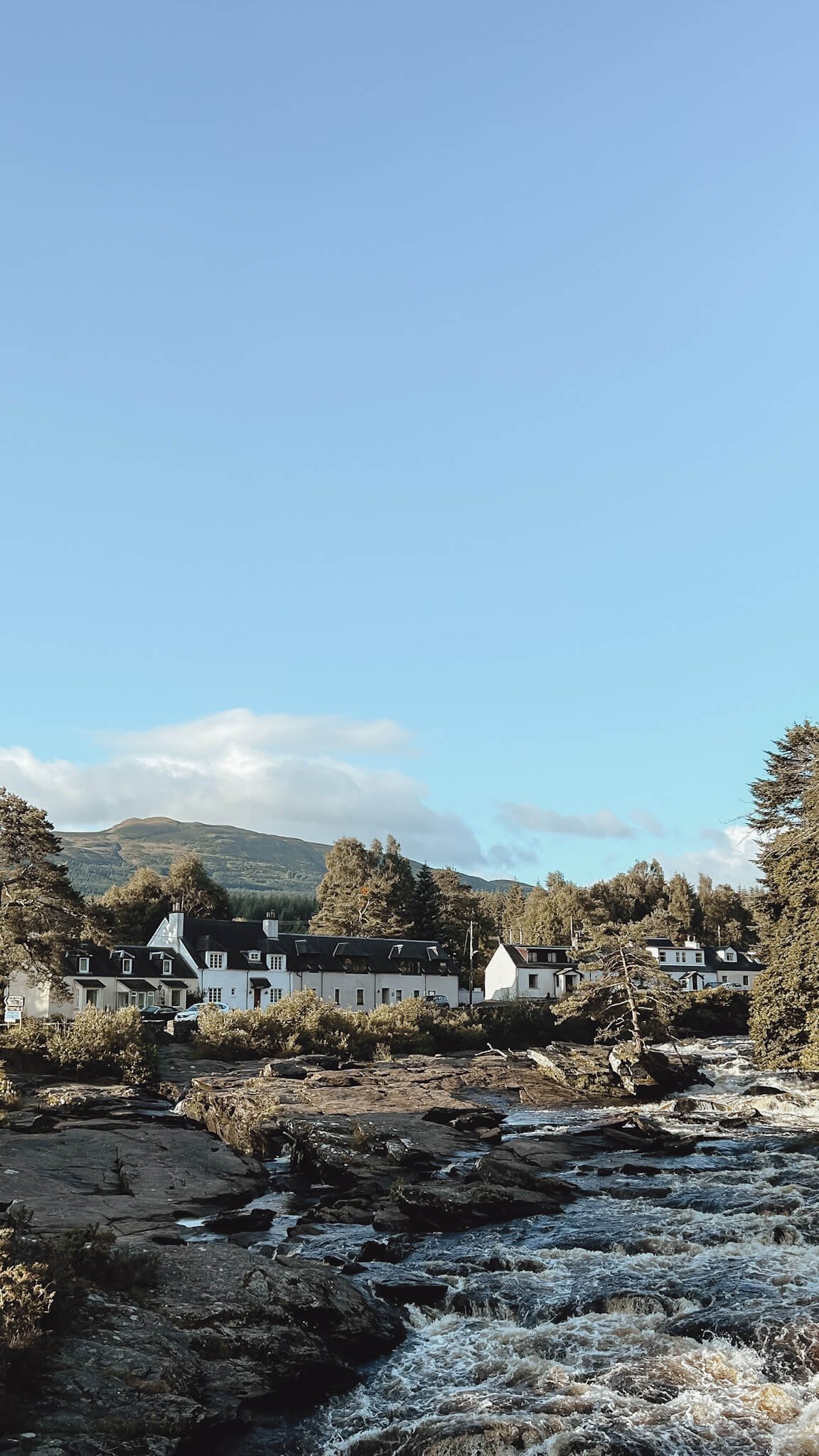The Rob Roy Way: Everything You Need To Know
Are you thinking of walking the Rob Roy Way and wondering where to start with planning? I walked the Rob Roy Way in the summer, so I’ve got firsthand experience of everything you need to know.
Written by: Lesley Stewart | Updated March 2025
In a country blessed with miles of long-distance walks and iconic trails, the Rob Roy Way stands out as one of the most picturesque.
The 128km path passes through some of Scotland’s most beautiful landscapes and connects the Trossachs National Park with Perthshire. Along the route you’ll discover pretty historic towns and picture-perfect villages, whilst a combination of forest trails and rural moorlands easily makes the Rob Roy Way one of the best thru hikes in Scotland.
Whilst some hikers may choose to walk the Rob Roy Way in one trip, for those seeking something more manageable, there’s also the option to join the route at any stage and tackle a smaller, more accessible section.
No matter which you choose, both options guarantee incredible forests, busy villages, excellent cafes, and those spectacular scenery.
In this guide, I’m sharing practical tips for anyone also looking to walk the Rob Roy Way. Plus, essential advice to plan your own walk, including the route, difficulty, and what to wear.
What is the Rob Roy Way?
The Rob Roy Way is a 128km official waymarked walk in Scotland, linking the historic market village of Drymen in the Trossachs with Pitlochry in Perthshire.
Walking the trail is a wonderful way to explore some of the prettiest parts of both the Trossachs National Park and Perthshire, with quaint villages, magical forests, wild moorland, dramatic glens and lochs, and mighty rivers.
The walk starts in the village of Drymen, where it intersects with the West Highland Way. From here, the Rob Roy Way heads north, through the beautiful towns of Killin and Aberfeldy, finally finishing in Pitlochry.
The route takes its name from infamous Scottish outlaw Rob Roy MacGregor, who used these tracks and paths in the 17th & 18th centuries.
Why walk the Rob Roy Way?
Though many walkers tackle the Rob Roy Way, it is far less popular than some of Scotland’s other long-distance routes.
What makes it different is a lack of the “big sights” so synonymous with Scotland. Yet the scenery is stunning, with characteristically sweeping highland views and enough steep hills & remote sections to provide a challenge.
Whilst for those seeking a longer and more remote experience, there is also the option to extend the trail, with an alternative stage across wild moorland.
However, the most popular section, especially for those walking smaller sections, is towards the start. Here the Rob Roy Way shares its route with a popular cycle path (national 7) and offers plenty of accessible day hikes. This section starts in the historic town of Callander and follows a series of paths to Strathyre, finishing in the village of Killin with its beautiful waterfalls.
The Rob Roy Way route
Rob Roy Way | 128km | 80 miles
Drymen - Aberfoyle - Callander - Strathyre - Killin - Loch Tay - Ardtalnaig - Aberfeldy - Pitlochry.
The Rob Roy Way stages
This is my Rob Roy Way route, completed in seven days. Note that days four through six are the longest. Ideally, I would’ve added an extra day and split these sections to make them shorter. However, that wasn’t possible due to the lack of accommodation on those stages.
Day 1 | Drymen to Aberfoyle / 18km (4.5 hours)
Day 2 | Aberfoyle to Callander /16km (4.5 hours)
Day 3 | Callander to Strathyre /15km (4 hours)
Day 4 | Strathyre to Killin / 22km (5.5 hours)
Day 5 | Killin to Ardtalnaig / 20km (5 hours)
Day 6 | Ardtalnaig to Aberfeldy / 24km (6 hours)
Day 7 | Aberfeldy to Pitlochry / 15km (5 hours)
How long does it take to walk the Rob Roy Way?
If you’re planning to walk the entire Rob Roy Way in one go, then allow around 7-days from start to finish. Whilst for those adding the extra sections, you’ll want to add an additional 2-days.
Ultimately, how many days you need depends on how much distance you want to cover each day, and if you want to spend time in the villages, or simply walk through.
However, given its length, not everyone will want to complete the route in one go. Therefore, an alternative option is to walk the Rob Roy Way in stages. There are numerous ways to do this, from long-weekends to more realistic daytrips, allowing you to plan day hikes which fit your schedule.
Rob Roy Way public transport
Do note that linking villages (or returning to your car) by public transport on the Rob Roy Way can be tricky. Whilst Aberfoyle, Callander, Strathyre and Killin are linked by an infrequent bus service, there are no public transport options until Aberfeldy. Therefore, if you want to split the route into day hikes, my advice is to ask a friend to provide support by car.
How difficult is the Rob Roy Way?
So long as you have a good level of fitness and walking experience, the Rob Roy Way isn’t especially challenging.
Instead, the hardest parts are likely to be:
the sections over open moorland, especially if the weather is bad
the occasional road section (especially the incredibly long road section between Ardeonaig and Acharn)
the frequent lack of signage
Once on the Rob Roy Way, you’ll find that most of the path is easy going and, with the exception of a few uphill sections, the vast majority of the route is reasonably flat. Some of the route takes you along cycle paths or minor roads, where the walking is on tarmac.
Is the route easy to follow?
When it comes to finding your way, the Rob Roy Way is signposted by way markers all along the route. These tend to be a blue and white “RRW” marker, but not always and you’ll also need to spot the green & yellow arrow marker.
However, there are a number of sections where the markers are few and far between. This is especially true on more remote parts, and in some forest sections, where markers are often absent (arguably when you need them most).
Therefore, it’s essential you carry a paper or digital map for reference. Personally, I found having the Rob Roy Way route saved on my phone using OS Maps was incredibly helpful.
You’ll find the GPX files here.
Can I get Rob Roy Way baggage transfer?
If you want to walk the Rob Roy Way, but don’t want to carry a heavy rucksack, you can have a more comfortable experience by arranging luggage transfer. This transfer service will take move your bag between stops along the Rob Roy Way.
What are the best sections of the Rob Roy Way?
Everyone who walks the trail will have a favourite, but the Perthshire stage between Aberfeldy and Pitlochry is a strong contender for the best part of the Rob Roy Way. This is where you’ll find the prettiest forest views, cute cafes, and follow the mighty River Tay.
Alternatively, further south, the sections between Callander to Strathyre, and Strathyre to Killin, are also beautiful sections of the Rob Roy Way. These manageable stages use the cycle path to explore the Falls of Leny, Loch Lubnaig, and the Glen Ogle Viaduct, and both can be completed in around 4-hours.
What do I need to pack for the Rob Roy Way?
The good news is, given this is a straight-forward trail, you don’t need any special equipment to complete the Rob Roy Way. However, there are some items that will absolutely make your life easier and ensure you have the best experience on the trail:
Footwear
One thing that is absolutely necessary – whether you’re doing a day or the entire path – are appropriate shoes. As mentioned, the route is a combination of tarmac, forest trails, and moorland, all of which need comfortable and supportive footwear. Personally, I recommend walking shoes with good grip and waterproofing, or hiking boots.
On the Rob Roy Way, I wore Scarpa hiking boots, which were perfect for crossing over moorland and through forests, especially on wet, muddy days.
Rucksack
No matter how long you’re planning to walk for, you’ll need a rucksack for packing layers, snacks, charged phone, cameras, and other essentials.
Wear + Pack
Waterproofs are always a sensible item to have in your bag.
Being on the coast Fife can be blustery, so pack a warm insulated jacket.
For the same reason, pack a wool hat.
And a cosy fleece
If you’re planning to walk for more than one day, wear a sweat wicking base layer on top.
Walking leggings are incredibly comfortable, flattering, and rain proof.
Cushioned walking socks.
Always wear, and pack, sun cream.
A power bank and mini charging cable for your phone.
Where can I stay along the Rob Roy Way?
Those walking the whole route will want to plan accommodation in advance.
Wild camping
Wild camping is popular on most of Scotland’s long-distance routes, and the Rob Roy Way is no exception. There’s plenty of wild land to pitch your tent along the way, just be sure to follow the Outdoor Access Code.
Accommodation
Alternatively, there are heaps of accommodation options along the Rob Roy Way, and most of the route is covered by a combination of hotels, guest houses, Airbnb, and a handful of campsites. This is especially true in the villages and towns, where you’ll find a variety of stays to suit all tastes & budgets.
There is one exception, though, where the lesser-visited stage between Killin and Aberfeldy has limited accommodation, likely influencing how much you walk on these stages. I was lucky to have support on this section, and I know people who have had to use a taxi to get back and forth from Killin or Kenmore to their accommodation.
Lastly, you should book your accommodation for the path in advance, no matter the time of year.
The hotels I used were:
Night 1 | Aberfoyle
Night 2 | Callander
Night 3 | Strathyre
Night 4 | Killin
Night 5 | Ardtalnaig
Night 6 | Aberfeldy
Night 7 | Pitlochry
What is the best time of year to walk the Rob Roy Way?
The best months to walk the Rob Roy Way are April through June and September through late October. During these months, there are plenty of accommodation options, and the weather is usually at its driest and mildest.
Whilst there are advantages to walking in the peak summer months (long days with lots of daylight and sunshine) there are a few reasons for avoiding the path during July and August. Firstly, the demand for summer accommodation in Scotland is high and can be expensive. Also, these are the months most likely to be swarming with midges!
However, as it is possible to walk the Rob Roy Way at any time of the year, choose your month depending on what is most important to you. For example, do you hate the cold, don’t mind midges, prefer longer days, and so on.
What is there to see & do along the Rob Roy Way?
Other than walking, there’s heaps to explore along the Rob Roy Way. The highland sights and scenery are the main attraction though, and magical forests or mountain views are a constant companion. Plus, there’s a wonderful scattering of charming towns to explore along the way.
Here are some of the Rob Roy Way highlights:
Towns like Killin, Aberfeldy, Aberfoyle & Pitlochry
Glen Ogle Viaduct
Falls of Leny
Loch Lubnaig
Loch Venacher
Falls of Dochart
Birks of Aberfeldy
Do I need to train for the Rob Roy Way?
As mentioned, as long as you have a good level of fitness, the Rob Roy Way will present no real challenges. However, it is a long-distance trail and it’s important to be prepared for walking big miles whilst carrying a rucksack, especially if you’re planning to carry a tent.
And don’t forget, there are a few stages with small but steep climbs over hills.
Honestly, don’t underestimate the need to improve your personal fitness prior to starting. Trust me when I say that strong legs and shoulders will make walking those big miles easier and far more enjoyable!
So, if you’re reading this and thinking you don’t feel physically ready, then view the Rob Roy Way as motivation to make some changes and start walking more.
Rob Roy Way resources + maps
Resources
The entire Rob Roy Way, including individual walk descriptions, is listed here. This site provides suggested stages, a helpful route breakdown, route information, timings, and an overview of each stage.
Another excellent resource is this walk site, where you’ll find a detailed description of each stage and suggestions for accommodation. The most helpful feature is the list of updates and diversions along the route.
Lastly, the Rob Roy is one of Scotland’s great trails, and whilst the official site is light on detailed information, it does have an incredibly handy interactive map.
Maps
As there’s limited signage along the Rob Roy Way, I found having a map was essential. I chose to plot my route in the OS Maps app on my phone, but also carried a paper map as a back up:


